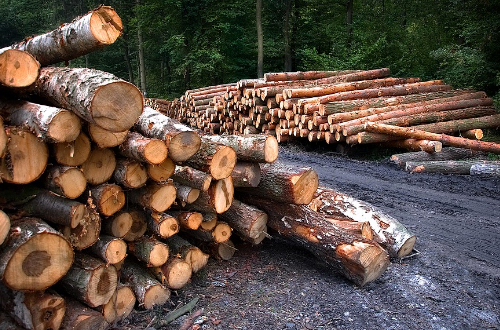
The graduates of first-cycle and second-cycle studies in forestry fare better on the job market than others. After graduation, particularly if they worked during studying, they get higher salaries on average. It is pictured by the data gathered as part of the Polish Graduate Tracking System ELA, representing the experience of graduates from 2014, with four years of experience on the job market.
The data from the Polish Graduate Tracking System (ELA) shows that the students of forestry-related faculties gain their first professional experience during the first-cycle studies (a bachelor’s degree, engineering degree). Around 20 percent of the surveyed group worked while they studied, and almost all of them (99.5 percent) took up employment or self-employment after the first year of studies. Self-employment was chosen by one out of ten graduates with work experience.
Bigger chances for work
What is important, close to half of the students who did not work during the course of their studies were also employed shortly after completing first-cycle studies, and this indicator increases to 92 percent in the following years. They also start their own businesses (5.5 %). This means that the level of professional commitment has been gradually evening out for all the first-cycle studies graduates, regardless of whether they worked during the course of their studies or not.
The Polish Graduate Tracking System data proves that young foresters who worked during the course of studies are a group at low risk of unemployment. In the first two years after graduation their unemployment rate is equal to mere 2/5 of the unemployment rates in their places of residence, and drops to 1/5 in the following two. The risk of unemployment is higher among individuals who did not work during the course of studies, and particularly high in the third year after completing the first-cycle studies, which in typical case means period just after completing second-cycle studies and a year-long internship. In the fourth year after getting a diploma the risk of unemployment decreases which means that graduates gradually find work.
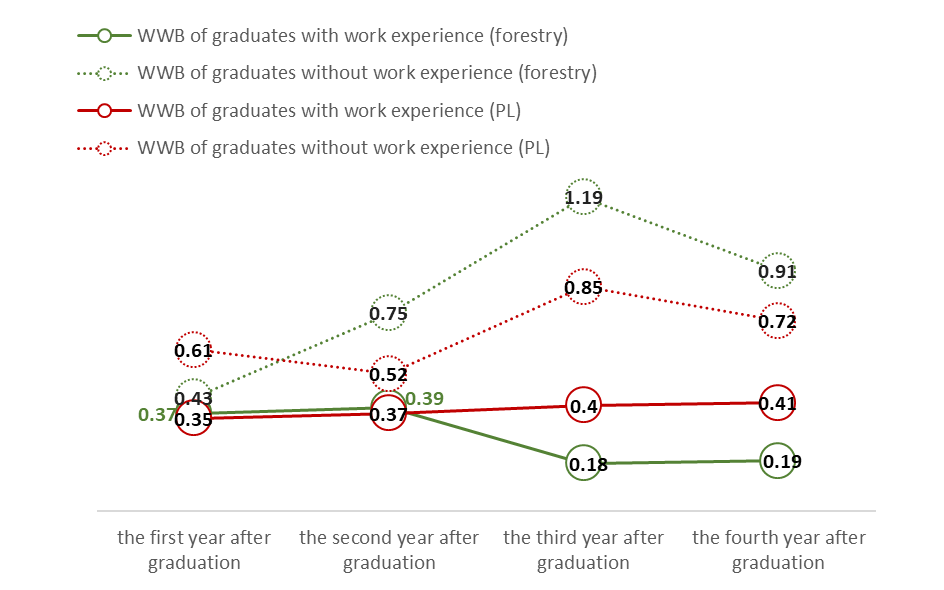
The graduates of first-cycle forestry programmes, even if they did not work during their studies, are more likely to find a job than others. The relative unemployment indicator is lower in this group than in the case of all first-cycle studies graduates. In the next two years this indicator rises, particularly if graduates of the first-cycle studies complete another stage of education. The data from the Polish Graduate Tracking System makes it clear that in the case of individuals with work experience the unemployment risk substantially decreases in the third and fourth year after graduation.
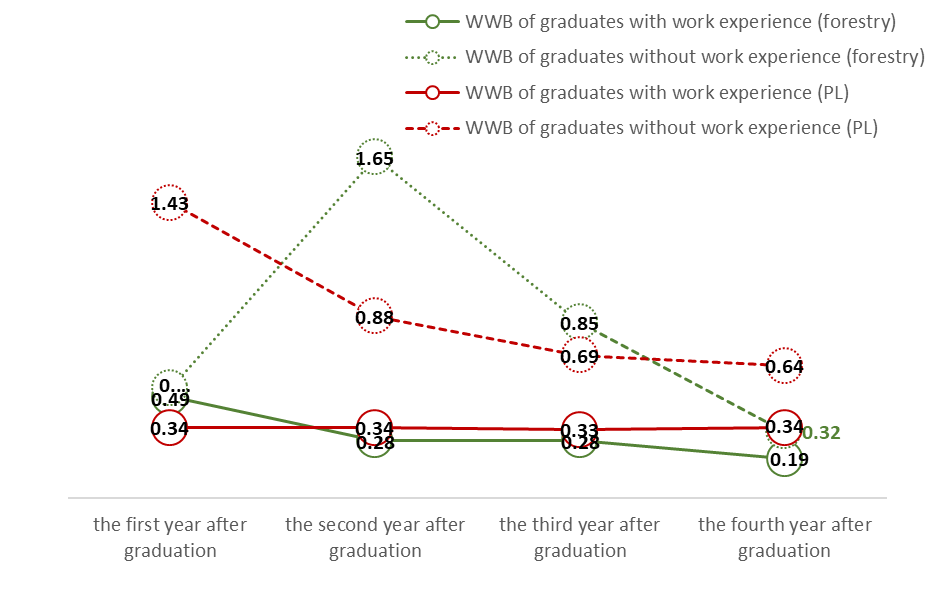
A thicker wallet
The graduates of forestry programmes get higher monthly wages both nominally and in relation to average wages – if
their wages get compared to wages of all the graduates. This gap persists in the following years after getting a diploma. In the first year after completing the first-cycle studies, the graduates with work experience earn 3,000 PLN on average, while young foresters circa 4,500 PLN. After four years from getting a BA diploma their monthly wages
skyrocket to the level of 5,700 PLN while the average for all the graduates revolves around 4,000 PLN.
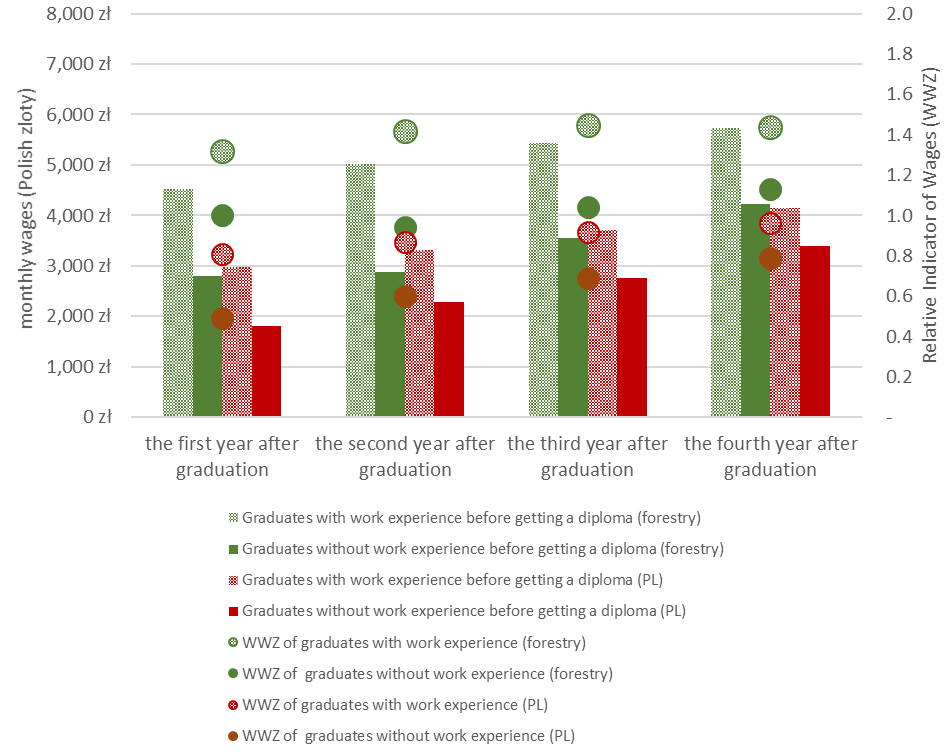
The average monthly wages of newly-minted foresters with work experience gained during the course of studies increase in four consecutive years after getting a diploma. They are stable and higher than average monthly wages in the place of residence, surpassing 140 percent of their level. Individuals without work experience earn the average monthly wage at first but in the third and fourth year after graduation their wages increase to the level surpassing the average by ten percent. In the fourth year after getting a diploma there is a visible narrowing gap between individuals with work experience and those without. In this case the wages situation of both groups is evening out.
A young forester looks for a job after an internship
As regards the foresters who defended their master’s thesis, 40 percent of them have worked during the course of
studies. Almost all (98.5 percent) find employment right after defending their theses. Those who did not take up
employment during studying are also easily employable right after graduating – over 90 percent find work within a year
after defending their theses. In the following years the values of the indicators rise and even out. This stems from
the fact of having to complete a year-long internship that ends with an exam. In order to be able to work as
foresters, they also need to pass another exam – for candidates who want to work in forest services. When internships
end, the unemployment indicator among qualified foresters quickly increases. In the case of all the graduates the
situation is reversed – the risk of unemployment is higher in the first year, and then decreases.
The deeper into the woods, the higher the salaries
In the fourth year after graduation the risk of unemployment is below the national average, while 7 percent of
forestry graduates run their own business. What is important, is that among the graduates with work experience, the
risk of unemployment is low and remains (after the second year since getting a diploma) on a level below average for
all graduates. The information from the ELA system indicate that the graduates of second-cycle studies in forestry
initially earn 2/3 more than the average in their place of residence, provided they had work experience during
studying. In the following years this discrepancy increases to around ¾ above average. Right after the defence of
master’s thesis a forester’s monthly wage stands at 5,700 PLN, and over the course of four years increases to circa
6,900 PLN. To compare, the holders of Master’s degree in other fields earn 3,000 PLN on average right after
graduating, and after four years that amount increases to a little more than 4,000 PLN.
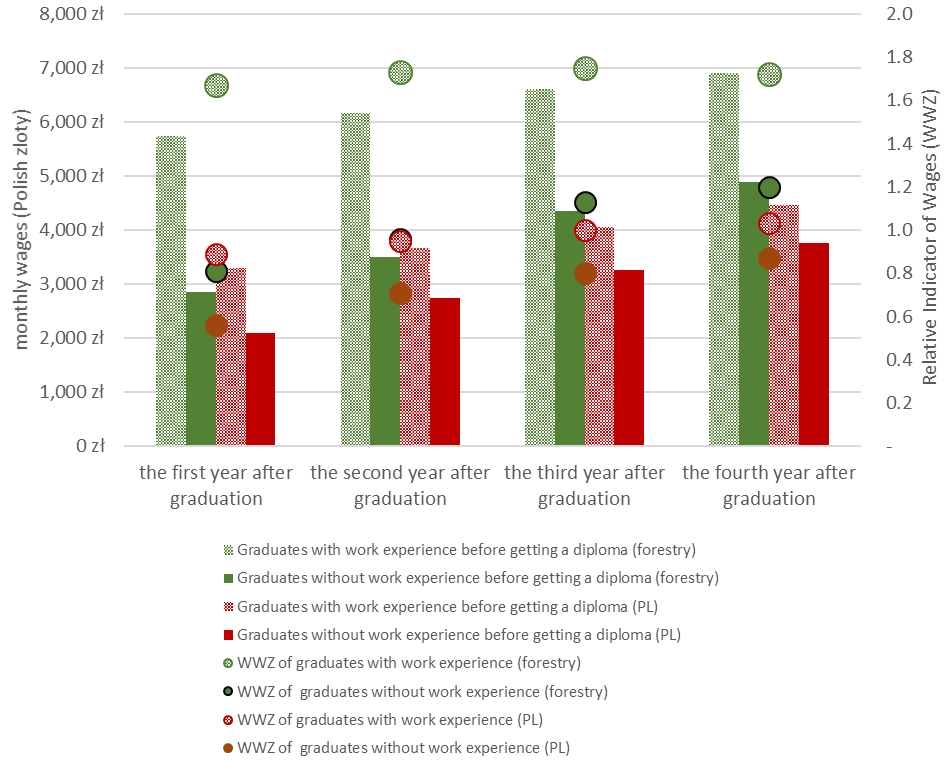
The monthly wages of the holders of a Master’s degree in forestry who do not have work experience grow from the level of 1/5 below the local average to the level of 1/5 above it in four years. The difference in monthly wages between individuals with work experience and those without it decreases in the following years, and reaches the level of approximately 1,100 PLN in the fourth year after graduation. Notwithstanding, this difference remains remarkable at the national backdrop.
ELA knows everything about the economic fate of graduates The Polish Graduate Tracking System (ELA) is developed by the National Information Processing Institute, and commissioned by Ministerstwo Edukacji i Nauki. It aims to present the most comprehensive information on the situation of graduates on the job market. The main source of information in the system are administrative data from two sources – the Social Insurance Institution system (data, inter alia, about the professional situation of graduates: employment, unemployment, wages) and the POL-on system (the Integrated System of Information on Science and Higher Education), i.e. the information system about the higher education supporting Ministerstwo Edukacji i Nauki (it contains information, inter alia, on the education of university graduates). Currently, the ELA system generates five types of reports about the economic fate of tertiary education graduates: Job search and unemployment, Wages, Work before and after graduation, Work and further studies, Geographical differentiation of graduates’ fate.